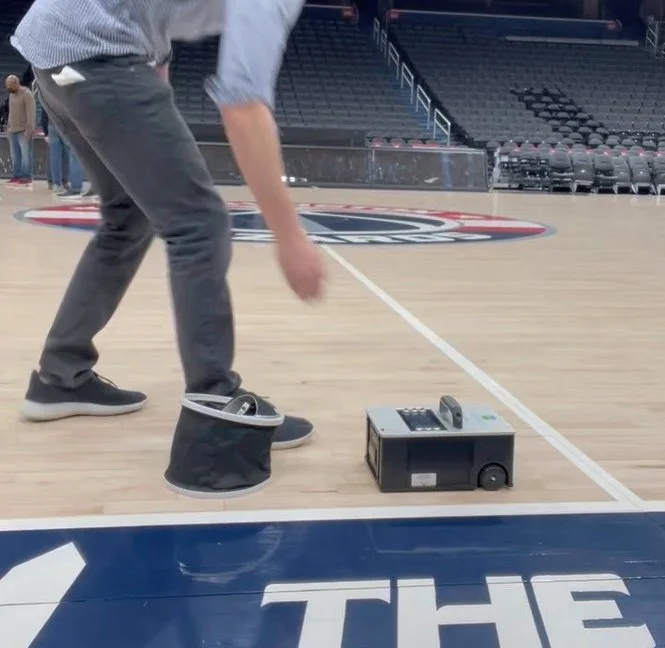Slippery floors are a major cause of accidents in public spaces, businesses, and homes. But what really determines how safe a floor is its material, how it’s cleaned, or how old it is? The answer isn’t always simple, which is why slip resistance testing is so important.
In this article, we break down the top factors that affect floor slipperiness and how you can stay one step ahead of safety risks.

Why Slip Resistance Testing Matters
Slip resistance testing is the process of measuring how much grip a floor surface provides under normal walking conditions. The results are usually expressed as a coefficient of friction (COF), with higher values indicating better slip resistance. Testing helps determine whether your floor meets standards like ANSI A326.3, reducing your risk of slip-and-fall incidents and lawsuits.
1. Flooring Material: The Foundation of Safety
The type of floor material plays a big role in how much friction it provides. Some surfaces are naturally more slip-resistant, while others become dangerous when wet.
Common Flooring Types:
- Ceramic and porcelain tiles: Can be slippery unless textured or treated
- Concrete: Naturally slip-resistant but depends on finish
- Vinyl and laminate: Varies depending on surface texture and quality
- Natural stone: Needs sealing; polished surfaces reduce grip
- Wood: Can be safe if properly finished, but vulnerable to wear
Verdict: Flooring material sets the baseline for safety. But it doesn’t stop there.
2. Cleaning Methods: Helping or Hurting?
How a floor is cleaned can dramatically affect its slip resistance, often more than the material itself!
Cleaning Mistakes That Increase Risk:
- Using waxy or oily products that leave behind a slick film
- Failing to rinse cleaning chemicals properly, leading to residue buildup
- Over-polishing floors to make them shiny, but dangerously smooth
Conversely, using the right cleaning products, especially those designed for slip-resistant floors, can maintain or even improve the floor’s safety rating.
Verdict: Cleaning is a major player. Even a high-traction surface can fail a slip resistance test due to the wrong cleaner.
3. Age and Wear: The Silent Danger
Even the best floors wear down over time. Regular foot traffic, cleaning, and environmental exposure can slowly reduce a floor’s grip.
How Age Affects Safety:
- Worn textures on tile or concrete smooth out over time
- Sealants and coatings degrade, reducing effectiveness
- Older floors are more likely to have hidden residues embedded in micro-surfaces
The issue with aging is that it’s gradual. You may not notice a change until someone slips or until a slip resistance test reveals the decline.
Verdict: Aging is subtle but dangerous. Routine testing is the only reliable way to track long-term performance.
Which Factor Matters Most?
The truth is: they all matter, and they often interact with each other.
- A textured tile can still be slippery if cleaned with waxy chemicals.
- A new vinyl floor may fail in a wet kitchen if not tested and treated.
- An older concrete floor could remain safe if properly maintained and sealed.
That’s why professional slip resistance testing is essential. It doesn’t guess it measures the true condition of the floor under real-world conditions.
How Slip Resistance Testing Works
Using devices like the BOT-3000E tribometer, certified testers measure the Dynamic Coefficient of Friction (DCOF) of your surface. The process is quick, non-destructive, and highly accurate. It helps identify not just if your floor is safe but why or why not.
You’ll receive a full report with actionable recommendations, whether it’s surface treatment, cleaning changes, or material replacement.
Stay Safe with Regular Testing
If you want to reduce risk and improve safety, schedule regular slip resistance testing especially if your floors are aging, exposed to moisture, or see heavy traffic.
Let Us Help You Walk Safer
At Walkway Management Group, we help businesses and property owners protect their people with certified slip resistance testing services.


















